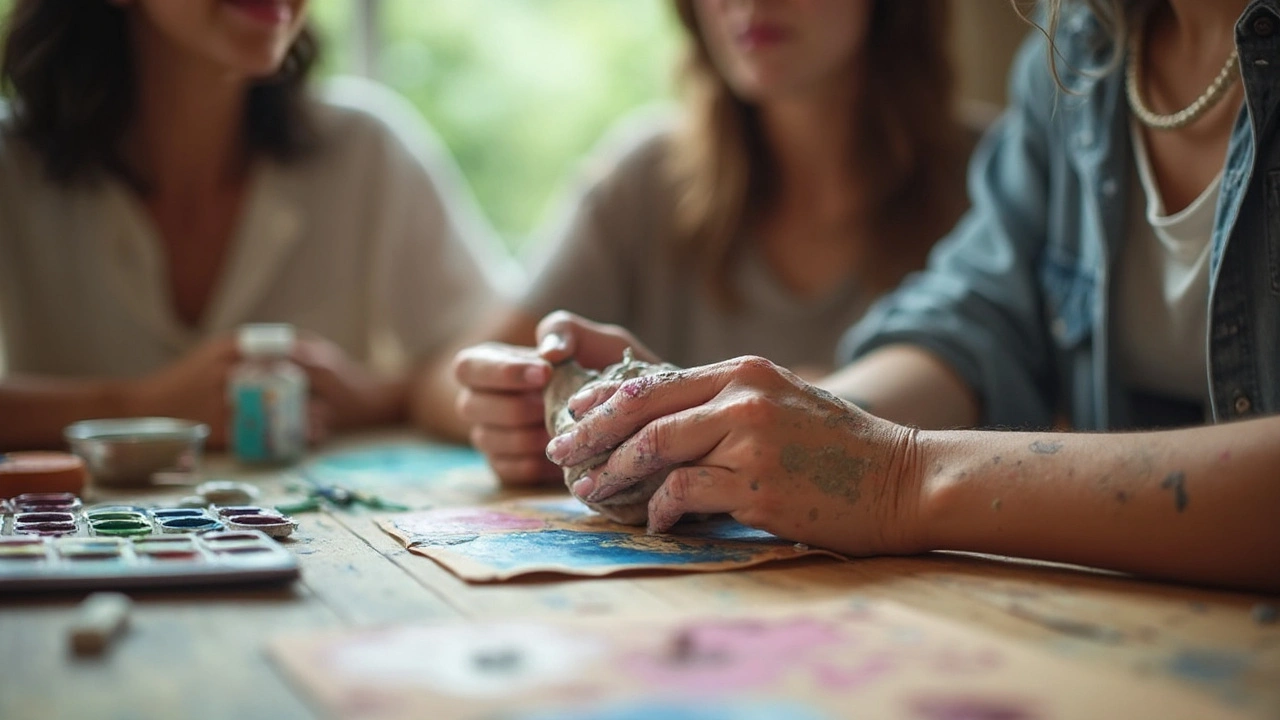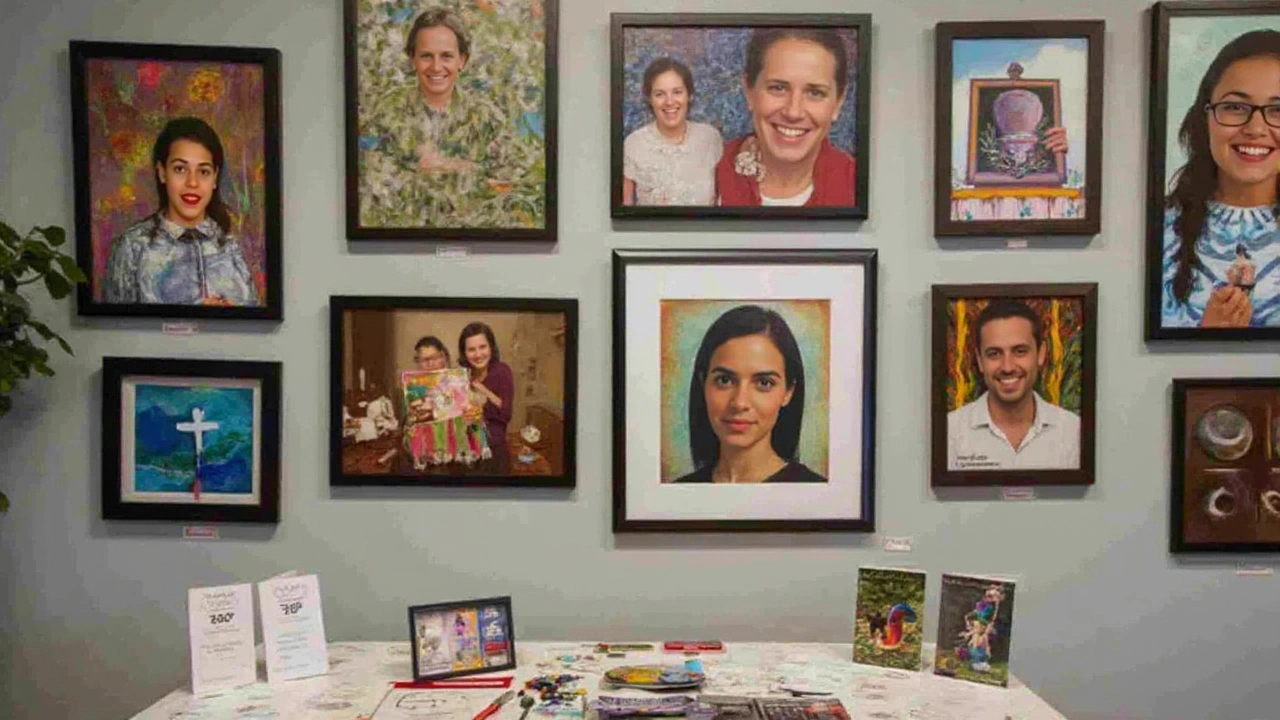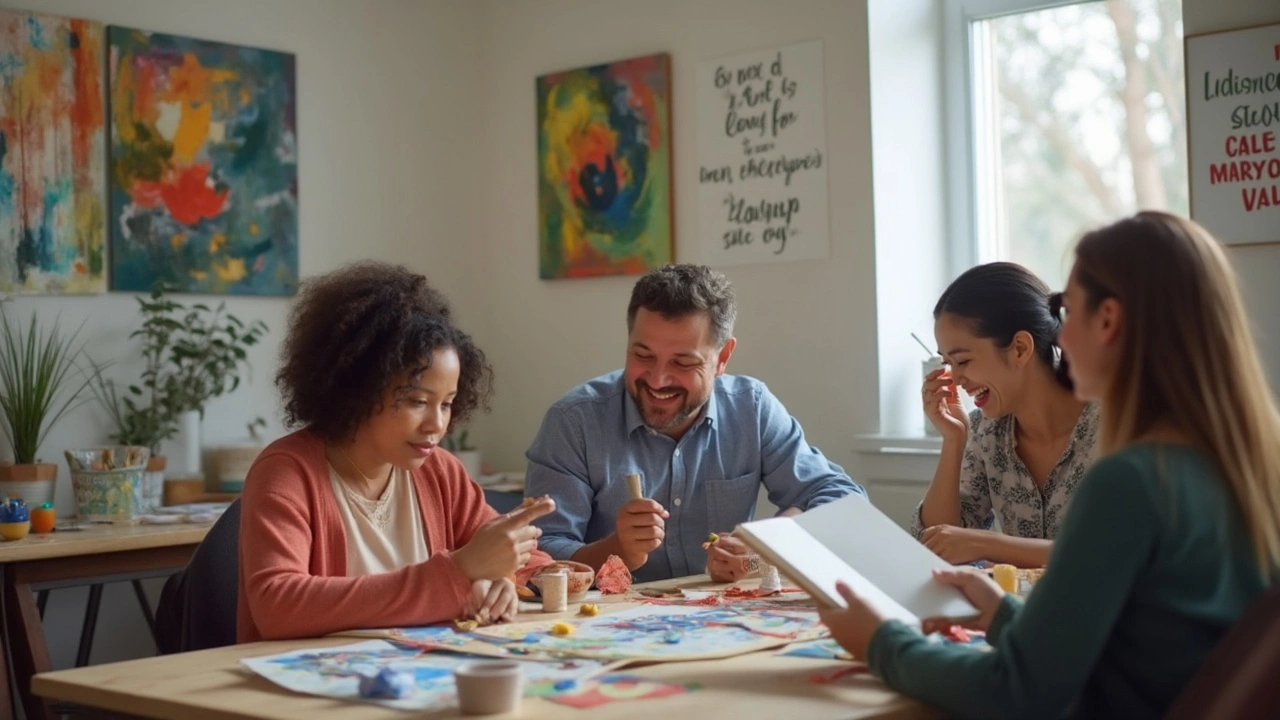Have you ever seen someone’s hands tremble nervously as they pick up a paintbrush? For years, those same hands may have clutched a glass, desperate for relief. But when alcohol loses its grip, what comes next? The stillness can be deafening, every feeling like an open wound. That space between craving and healing gets loud—unless you find something else to fill the silence. More and more people are discovering that art and creativity give them a way through that awkward, raw in-between. Not everyone needs brushes or clay; sometimes it’s writing, music, beading, or just doodling in the sand at the beach. But let’s get real: how does something as simple as art make a difference when the stakes feel as high as life itself?
Why Creativity Speaks Louder Than Words in Recovery
Imagine trying to explain to a therapist the chaos you feel—the guilt, shame, anger, hope, fear, and longing for relief, all tangled up. Sometimes words don’t cut it. That’s where art steals the spotlight. Creative activities can leap over logic straight to the nervous system. A 2022 study in The Lancet Psychiatry showed that people using art therapy alongside regular treatment saw better emotional regulation and fewer relapse rates during their first year sober. Researchers believe the hands-on process acts like a pressure valve, letting out built-up tension in a way talk alone can’t.
In some South African recovery centres, creativity is given equal footing with counselling. Here in Durban, a local rehab has pottery wheels spinning right next to the group therapy room. Clients talk about their clay bowls in almost mystical terms—not because of what the bowls look like, but because of what the act means. It’s not about skill or talent. If you can move your fingers, you can shape clay. It’s about building something with the same hands that once tore your life apart, and that’s pretty potent.
Art also offers a much-needed sense of control. When addiction strips away your freedom, making choices—about colour, texture, pacing—becomes powerful all on its own. Do you need to shred paper and glue the scraps into a storm? Want to freefall into watercolour splashes? Go for it. If you mess up, who cares? There’s no failing at expression. In fact, a 2023 review in Frontiers in Psychology found that creative projects boosted self-esteem and reduced anxiety levels in newly sober people by as much as 40%.
Here’s where it gets even more interesting: making art “lights up” areas of the brain linked to problem-solving, focus, and motivation—the same regions hammered by alcohol over time. Functional MRI scans reveal more neural connections growing after only a few weeks of creative work. That’s not just pretty pictures on a fridge; that’s the science of healing in real-time.
Music plays a huge part too. Durban’s own Shembe Community Recovery Choir uses traditional Zulu songs during group sessions, giving voice to feelings there’s no English word for. Singing together brings a feeling of belonging back into people’s lives—something that disappears in the isolation of addiction.
| Therapy Type | Reported Relapse Rate (1 year) | Self-Reported Anxiety Score |
|---|---|---|
| Traditional Talking Therapy | 43% | 7.1 |
| Art Therapy-Integrated Treatment | 28% | 4.2 |
If you’re thinking, “Well, I’m not artsy,” here’s the punchline: most people in these studies hadn’t touched art supplies since primary school. It’s not about being good at it. It’s about digging deep with new tools—and maybe finding hidden strengths.

Practical Ways Creativity Fits Into Recovery Routines
The best part about using art or creativity in healing? You don’t need fancy supplies. A pencil and a tired old notebook do the trick. Recovery programs around the world, from Durban to Dallas, are ditching the “one size fits all” model, weaving creative options right into daily schedules. Looking at what works on the ground brings real hope, not hollow theory.
Try a guided exercise called “Life Map Collage.” Grab a pile of magazines, scissors, glue, and a poster board. Ask yourself: What moments shaped me, for better or worse? Find images that match. Stick down photos, words, textures—sometimes you’ll see patterns and connections that never made sense before. Many in recovery say it helps them look at old pain with new eyes. You might realize you’ve survived more than you thought, or spot places where hope cracks through.
If keeping your hands busy helps with cravings, clay is your friend. Therapists see big breakthroughs just from letting people smoosh stress into a lumpy sculpture, without aiming for perfection. You can try this at home using cheap air-dry clay or even homemade salt dough. The act of rolling and shaping interrupts rumination—the endless loop of dark thoughts. That small break is sometimes enough to resist pouring a drink.
Journaling with a twist also helps, especially in early sobriety when feelings bubble up. Instead of just words, try “art journaling.” Slap down a splash of paint or doodle between lines of text. Use stickers, bits of fabric, pressed leaves—anything handy. This blends left-brain thinking (logic) and right-brain emotion, giving you a double boost.
- Art therapy can be solo or in a group—no need to share what you make unless you want to.
- Music improvisation (like drumming or free singing) shifts mood quickly and offers instant feedback for frustration or joy.
- Photography walks help people see progress over time—snap a shot in the morning, another at night, trace change visually.
- Colouring, yes, even adult colouring books, lowers blood pressure and distracts from cravings. A 2021 study found a 30-minute colouring session lowered heart rate by 10% for those reporting high anxiety in detox.
It’s not just about making things—it’s about creating space for new routines. Cravings often hit hardest during “empty” chunks of time. Scheduling a creation hour, like you’d set a meeting, helps fill that space with purpose. And when you finish something—a poem, a drawing, a piece of jewellery—you’ve earned a dopamine boost. That “I did it!” rush can help replace the old high alcohol used to give.
Group projects are especially popular in Durban’s outpatient clinics. Painting a mural together or building something as a team encourages connection. Social belonging is a serious protective factor against relapse, and shared creative goals knit people together quickly. Even simple activities like building a driftwood sculpture on the beach bring moments of laughter and lightness, making sobriety feel a little less lonely.
Don’t forget, setbacks happen. Plenty of people start a project and abandon it halfway through. Instead of seeing this as failure, view it as a mirror. What thoughts came up? Did impatience or harsh self-talk return? Sometimes the act of pausing teaches more than pushing through. If that sounds scary, remember you’re not alone—many in recovery share exactly these moments and find clarity through discussing them in therapy or group chat.

Stories, Tips, and The Future of Healing Through Art
Sabelo, a 38-year-old Durban mechanic, tells his story with a laugh: “I couldn’t draw a stick figure before rehab! Now my flat’s covered in pastel sketches. I still get hit with rough cravings, but sitting down with my pencils, I lose track of time. It’s like the ache can’t catch me anymore.”
People in recovery aren’t looking for a fast fix; they want something real to hold on to. Art and creativity tick that box precisely because they’re process-based, not product-obsessed. The key lies in experimenting. Maybe draw your cravings as ugly monsters—then tear up the page. Thread beads with every new sober day and wear your progress. Write a song where you name your worst fear out loud. Each act has power to disrupt the old, automatic patterns and bring new meaning. As you chart your own healing path, consider these tips inspired by real recovery groups across South Africa:
- Start messily, not with expectations or rules. Art in recovery works best when you let go of “shoulds.”
- Keep your chosen supplies within reach. A basket of markers on the kitchen table invites spontaneous creativity.
- Set a regular date with your creative self, just ten minutes at a time—consistency beats intensity.
- Find creative buddies. Share your projects or just make them in company, in-person or remotely.
- When cravings hit, reach for creation before coping the old way, even if the urge only fades for a minute. Each time counts.
- If art makes painful memories surface, share them with your therapist or sponsor. The process can get emotional—and that’s okay.
- Savor “done,” even if the project is weird or unfinished. Small victories add up.
Looking ahead, more clinics and support networks are weaving in creative therapies right alongside medication and group work. The World Health Organization updated its mental health guidelines in 2023, urging more countries to fund expressive arts programs for addiction recovery. Brain scans, heart monitors, and honest stories from the people living it day-to-day all echo the same truth: creative acts—no matter how small—spark a kind of healing you simply can’t fake.
If you’re reading this on a damp Durban morning or anywhere else in the world, and you’re battling that old ache, try picking up something—pen, paint, a song, a shell. Let hands lead the way for a little while. Sometimes healing sounds less like formal advice and more like the soft scratch of a crayon or the splash of blue paint in a world you’re just learning to love again.
